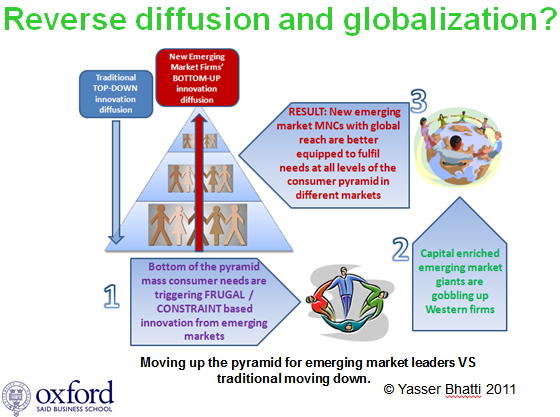Diffusion is the process in which an innovation is communicated through certain channels over time among the members of an social system (pg. [Everett M Rogers; Introduces a theory which explains why some technological innovations are widely adopted and why some are not. View Diffusion of Innovations Theory Research Papers on Academia. The Diffusion Of Innovations Theory Everett Rogers Diffusion of Innovations theory offers a timetested framework to parse out some of the factors that may have contributed to an innovation's. Buy Diffusion of Innovations, 5th Edition 5 by Everett M. Rogers (ISBN: ) from Amazon's Book Store. Everyday low prices and free delivery on eligible orders. Diffusion of innovations is a theory that seeks to explain how, why, and at what rate new ideas and technology spread. Everett Rogers, a professor of communication studies, popularized the theory in his book Diffusion of Innovations; the book was first published in 1962, and is now in its fifth. Diffusion of innovations's wiki: Diffusion of innovations is a theory that seeks to explain how, why, and at what rate new ideas and technology spread. Everett Rogers, a professor of communication studies, popularized the theory in his book Diffusion of Innovations; the book was first pu This was the question addressed by Dr Everett Rogers in his book, the Diffusion of Innovations and this short video summarises his key ideas, including the concepts of early adopters, early and. Learn more about the Diffusion of Innovations by Everett Rogers to examine at what rate a new product or idea spreads through a certain group. Read more Diffusion of innovations is a theory that seeks to explain how, why, and at what rate new ideas and technology spread. Everett Rogers, a professor of communication studies, popularized the theory in his book Diffusion of Innovations; the book was first published in 1962, and is now in its fifth edition (2003). [1 Rogers argues that diffusion is the process by which an innovation is. Literature in the field of ecoinnovations often focuses on policy, regulations, technology, market and firm specific factors rather than diffusion. Most of the research on the diffusion of innovations focused on simple, productbased innovations, for which the unit of adoption is the individual, and diffusion. [Everett M Rogers This references concerns the history of the spread of new ideas. It explains how inventions are almost always perceived as uncertain or even risky. To overcome this, most people seek out others like. Diffusion of Innovations Theory Diffusion of innovations is a theory profound by Everett Rogers that seeks to explain how, why, and at what rate new ideas and technology spread. Rogers argues that diffusion is the process by which an innovation is communicated over time among the Diffusion of Innovations, by Everett Rogers (1995). March 18, 2003 Much has been made of the profound effect of the tipping point, the point at which a trend catches fire spreading exponentially through the population. The idea suggests that, for good or bad, change can be promoted rather easily in a social system through a domino effect. Once innovation occurs, innovations may be spread from the innovator to other individuals and groups. This process has been proposed that the life cycle of innovations can be described using the 'scurve' or diffusion curve. The scurve maps growth of revenue or productivity against time. Nonstate Actors and the Diffusion of Innovations: The Case of Suicide Terrorism Michael C Horowitz Abstract Studies of terrorism in general and suicide terrorism in particular tend to view terrorist groups independently However, what if the propensity for a terror List of Case Illustrations [xiii Preface Chapter 1 ELEMENTS OF DIFFUSION [1 WHAT IS DIFFUSION? [5 FOUR MAIN ELEMENTS IN THE DIFFUSION OF INNOVATIONS [10 Now in its fifth edition, Diffusion of Innovations is a classic work on the spread of new ideas. In this renowned book, Everett M. Rogers, professor and chair of the Department of Communication Journalism at the University of New Mexico, explains how new ideas spread via communication channels over time. Such innovations are initially perceived as uncertain and even risky. LongTerm Barriers to the International Diffusion of Innovations Enrico Spolaore, Romain Wacziarg. Issued in August 2011 NBER Finance and Macroeconomics, Political Economy We document an empirical relationship between the crosscountry adoption of technologies and the degree of longterm historical relatedness between human populations. Diffusion of Innovations, 5th Edition: Edition 5 Ebook written by Everett M. Read this book using Google Play Books app on your PC, android, iOS devices. Download for offline reading, highlight, bookmark or take notes while you read Diffusion of Innovations, 5th Edition: Edition 5. 1960s and 1970s, for every copy of Diffusion of Innovations that was purchased in the U. , Ev estimated that four were being purchased in countries of Asia, Africa, and Latin America. When the first edition of Diffusion of Innovations was published, Ev was 31years old. Diffusion of Innovations ProgramProject Management Resource List# 39. Provided by the NASA Headquarters Library. Technology transfer is the process by which inventions and practices that were developed at an organization flow into the American economy at large. Few social science theories have a history of conceptual and empirical study as long as does the diffusion of innovations. The robustness of this theory derives from the many disciplines and fields of study in which diffusion has been studied, from the international richness of these studies, and. Diffusion of Innovations, 5th Edition by Everett M. Rogers Now in its fifth edition, Diffusion of Innovations is a classic work on the spread of new ideas. In Diffusion of innovation research was first started in 1903 by seminal researcher Gabriel Tarde, who first plotted the Sshaped diffusion curve. Confirmation of the decision; Once innovation occurs, innovations may be spread from the innovator to other individuals and groups. This theory looks at how new ideas, practices, or innovations are spread throughout a community or pop ulation. It models the diffusion, or spread, of the innova tions in relation to their. The diffusion of innovation refers to the tendency of new products, practices, or ideas to spread among people. Usually, when new products or ideas come about, they are only adopted by a small group of people initially; later, many innovations spread to other people. Diffusion of innovations Jon Roland. Those who support a cause that they are having difficulty selling to the public would benefit from the study of work in a field called diffusion of innovations. There is a book with that title by Everett Rogers. Rogers opfatter diffusion som en Nr et produkt spredes, er det viden og informationer, der spredes. Det er viden om produktets fremstilling, dets anvendelse osv. Now in its fifth edition, Diffusion of Innovations is a classic work on the spread of new ideas. In this renowned book, Everett M. Rogers, professor and chair of the Department of Communication Journalism at the University of New Mexico, explains how. Diffusion of innovations is a theory that seeks to explain how, why, and at what rate new ideas and technology spread. Everett Rogers, a professor of communication studies, popularized the theory in his book Diffusion of Innovations; the book was first published in 1962, and is now in its fifth. Limitations of Diffusion of Innovation Theory There are several limitations of Diffusion of Innovation Theory, which include the following: Much of the evidence for this theory, including the adopter categories, did not originate in public health and it was not developed to explicitly apply to adoption of new behaviors or health innovations. That is, the diffusion of innovations studies emphasize characteristics of an innovation and the role of communication channels in adopting the innovation, the media choice studies focus on the interaction between individual characteristics and social influences in choosing some innovations, and the implementation studies. The process evaluation was primarily based on Rogers's diffusion of innova tions model, including monitoring of the intervention delivery, participation, comprehension, satisfaction, level of use. Diffusion of Innovations has 988 ratings and 68 reviews. Lu said: Essential reading if you want to understand how new things come into our world. It's no The original diffusion research was done as early as 1903 by the French sociologist Gabriel Tarde who plotted the original Sshaped diffusion curve. Tardes' 1903 Sshaped curve is of current importance because most innovations have an Sshaped rate of adoption (Rogers, 1995). Diffusion scholars recognise five qualities that determine the success of an innovation. 1) Relative advantage Diffusion of Innovations. The success of an innovation depends on how well it evolves to meet the needs of more and more demanding and riskaverse Diffusion of Innovations relatively favorable circumstances, the decision of whether or not to adopt an innovation is a tricky one. We can use the studies of the diffusion of innovations as a laboratory to ex Thus, diffusion of innovations is a social process that communicates perceived information about a new idea; it produces an alteration in the structure and function of. Understanding the adoption lifecycle of innovation can be characterised using Everett Rogers Diffusions of Innovation theory. The theory categorises innovat Diffusion of Innovations. Diffusion of Innovations What is the The Diffusion of Innovation model? Using the Diffusion of Innovation (DOI) to engage with different types of buyers when new products are launchedWhat is The Diffusion of Innovation? View Diffusion of Innovations Research Papers on Academia. Diffusion of Innovations, 5th Edition [Everett M. FREE shipping on qualifying offers. Now in its fifth edition, Diffusion of Innovations is a classic work on the spread of new ideas. In this renowned book Now in its fifth edition, Diffusion of Innovations is a classic work on the spread of new ideas. In this renowned book, Everett M. Rogers, professor and chair of the Department of Communication Journalism at the University of New Mexico, explains how new ideas spread via communication channels over time. Such innovations are initially perceived as uncertain and even risky..











